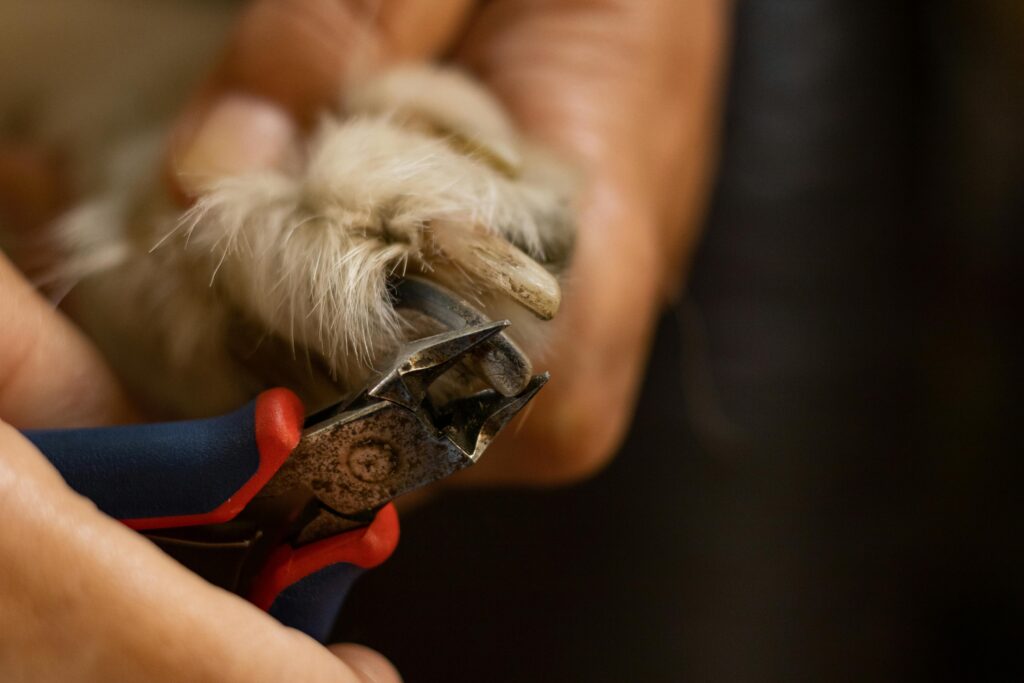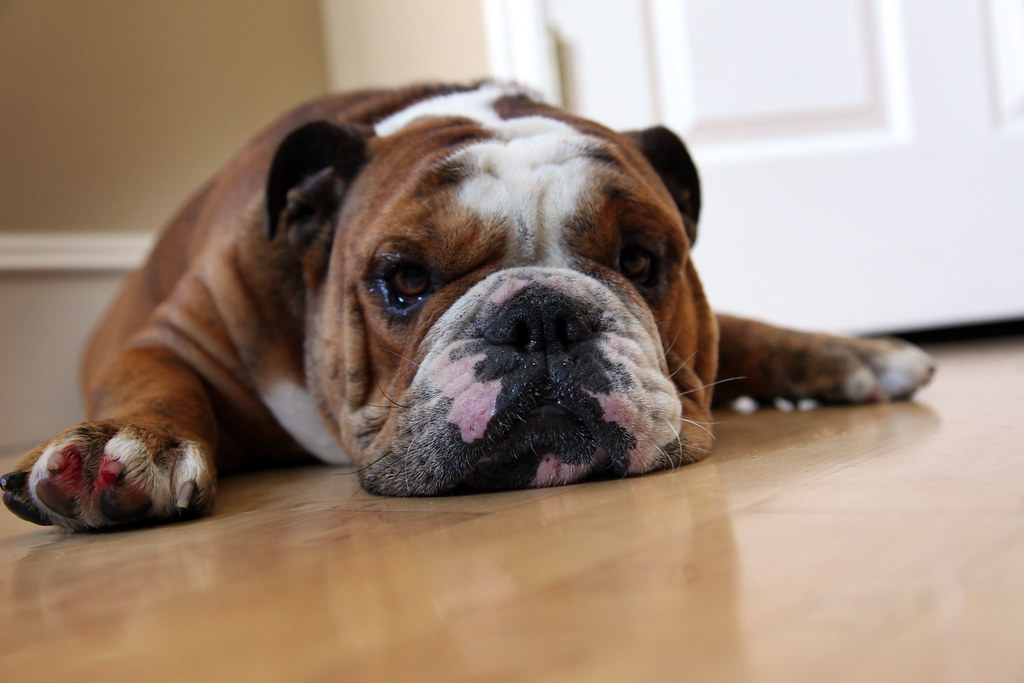How To Cut Dog’s Nails Without Clippers ?

How To Cut Dog’s Nails Without Clippers :- Keeping your canine companion’s nails trimmed is just as essential as regular grooming for us humans. Without proper maintenance, their nails can become overgrown, leading to a host of issues – from discomfort and pain to snagged nails and reduced traction.
Clipping your dog’s nails with traditional clippers can be a nerve-wracking experience, especially considering the risk of cutting the quick, causing pain and anxiety for both you and your furry friend. For some dogs, this discomfort can linger, making future nail trimming sessions even more challenging.
Luckily, there are alternatives to clippers that can make the process smoother for both you and your pup. Nail files and Dremel-type tools offer gentler options for trimming nails, reducing the risk of cutting too short and minimizing anxiety during the process.
It’s also worth noting that not all dogs require frequent nail trims. Active outdoor dogs who spend plenty of time on hard surfaces may naturally wear down their nails, requiring less frequent maintenance. On the other hand, indoor pups or those with limited outdoor access may need more regular attention to keep their nails in check.
Ultimately, finding the right nail care routine for your furry friend is key to their comfort and well-being. Whether it’s clippers, files, or Dremel tools, the goal is the same – to ensure your dog’s nails are trimmed safely and comfortably, allowing them to continue exploring the world on happy paws.

Why should you cut dog’s nails?
How To Cut Dog’s Nails Without Clippers Once upon a time, before they became our beloved companions, dogs roamed freely, their nails serving as invaluable tools for traction and environmental awareness. But in today’s world of smooth sidewalks and plush carpets, many pets miss out on the natural abrasion needed to keep their nails in check – and it’s more than just a cosmetic concern.
As a dog’s nails grow longer, they begin to exert pressure on the nail bed, akin to squeezing into shoes that are a size too small. This discomfort can prompt changes in the dog’s posture and gait as they try to alleviate the pain, leading to misalignment and strain on their joints. Over time, their feet may appear flattened and splayed, a visible sign of the toll that overgrown nails can take.
Beyond mere aesthetics, this altered stance increases the risk of injuries, from slips and falls to more serious conditions like arthritis. With each step, the dog’s compromised posture puts added stress on their limbs, hastening the onset of joint problems.
So, while it may seem like a minor detail, keeping your pup’s nails trimmed is essential for their comfort and overall well-being. By ensuring their nails remain at a healthy length, you’re not just preventing discomfort – you’re safeguarding against a host of potential issues, allowing your furry friend to navigate the world on sturdy, pain-free paws.
Methods to Get Rid of the Shakes
How To Cut Dog’s Nails Without Clippers If your furry friend tends to get a bit jittery at the sight of nail clippers, fear not – there are strategies to help ease their nerves and ensure a smoother nail-trimming experience.

Desensitizing your dog to the clippers is a gradual process aimed at replacing any negative associations with a more positive outlook. Start by showing your pup that there’s nothing to fear – approach the clippers with confidence and a calm demeanor. Offer treats as you introduce the clippers, gradually moving closer as your dog becomes more comfortable. Take it slow and steady, building up to touching their paws with the closed clippers. By the end of this process, your pup should no longer view nail clipping as a cause for anxiety.
When it comes to choosing the right nail trimmers, consider the different styles available and which might be best suited to your dog’s temperament.
The scissor style clippers offer precision and control, making them ideal for calmer dogs who can sit still during the trimming process. However, they may be trickier to use if your pup tends to squirm.
The guillotine style clippers, despite their ominous name, are a user-friendly option that allows for easy control and may be preferable for dogs who find the process stressful. Just beware of blunt ends that could scratch if your pup is prone to jumping up for affection.
For a gentler approach, consider a nail grinder. This tool works like a drill, gradually sanding down your dog’s nails for a smoother finish. While it may take some getting used to due to the vibration and noise, it’s the safest option for avoiding the dreaded quick.
Remember, patience is key when introducing new grooming techniques to your pup. With time and a little positive reinforcement, nail trimming can become a stress-free part of your dog’s routine.
How to safely trim your dog’s nails
Now that you’ve gathered your supplies, it’s time to tackle the task of trimming your dog’s nails. While many dogs may initially be uncomfortable with the process, with some patience and practice, you can learn how to trim your dog’s nails effectively even if they’re not too keen on it.

- Find a Comfortable Position: Setting the stage with the right position can make the process easier. Whether you’re sitting on the floor with your dog in your lap or using a table, position yourself opposite the nail you’re trimming for better access and control.
- Keep Your Dog Calm: Calm reassurance and positive reinforcement are key. Gently pat and massage your dog to help them relax. Making trimming time enjoyable with high-value treats and a cheerful demeanor can help ease any stress.
- Assess Your Dog’s Nails: Before you start trimming, assess your dog’s nails to locate the quick – the sensitive part containing blood vessels and nerves. With light-colored nails, the pink quick is easy to see, but for dark nails, it may require more careful attention or the help of a professional groomer.
- Clip the Nails: Use a scissors-type nail trimmer to clip the nails, ensuring to avoid cutting into the quick. For dark nails, make small snips and look for a gray-to-pink oval at the top of the cut surface, indicating the proximity to the quick. Stop cutting when you see this to avoid causing bleeding and discomfort.
- Take Breaks and Reward: Take breaks between each paw, especially if your dog is new to nail trimming. Reward them with treats after each successful clip to associate the process with positive experiences. Gradually build up the number of cuts or paws between treats to increase confidence and make the experience more enjoyable for both you and your pup.
By following these steps and maintaining a patient and calm approach, you can make nail trimming a stress-free and rewarding activity for you and your furry friend.




